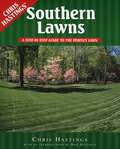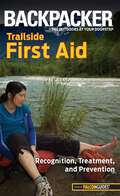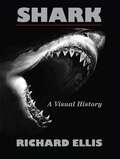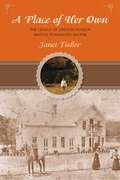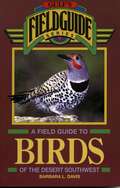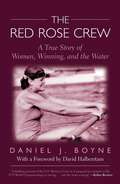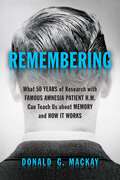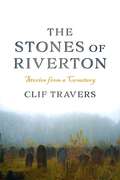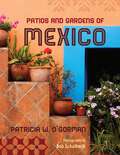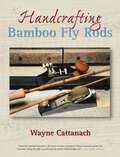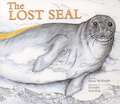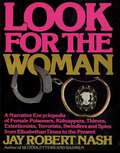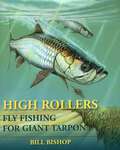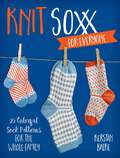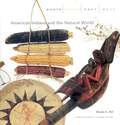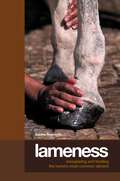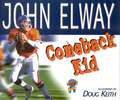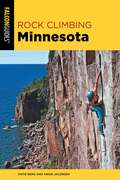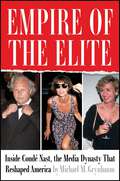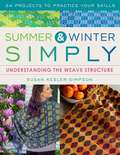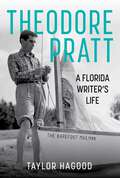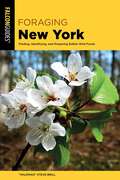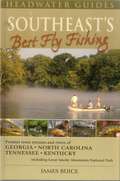- Table View
- List View
Southern Lawns: A Step-by-Step Guide to the Perfect Lawn
by Chris HastingsSon of renowned horticulturist Don Hastings, Chris Hastings presents his readers with step-by-step instructions for year-round care of lawns from Virginia to Texas.
Backpacker Magazine's Trailside First Aid: Recognition, Treatment, And Prevention (Backpacker Magazine Series)
by Molly AbsolonBackpacker magazine–branded and fueled by Falcon-Guides, this book provides essential mind gear from the two most respected and reliable publishers of outdoor-relatedinformation. Perfect for pack or pocket, it breaks down its subject into the essential topics, providing practical and portable information useful in the field. Full-color photos, charts, and illustrations are organized with text by an expert in a brief and accessible manner, introducing readers to basic and intermediate skills needed to safely and successfully get by in the outdoors. Backpacker Magazine's Trailside First Aid assembles for readers an outdoor first-aid kit of essential items; soothe bites and stings; deal with hot and cold injuries; wrap sprains, fractures, and dislocated joints; handle backcountry emergencies until professional help arrives. This handy pocket-sized guide is 96 pages and incorporates color photos, charts, and illustrations as needed throughout the interior.
Shark: A Visual History
by Richard Ellis“The sharks, ancient or modern, real or imaginary, have always been with us, and will probably remain with us forever. They appear not only in movies and literature, but in countless permutations of size, shape, and materials, permeating our daily lives with their silent menace. In a sense, humans live in a world replete with sharks, not vice-versa.” Thus Richard Ellis sets about chronicling and debunking the myths of sharks throughout history. From 18th century art to the phenomena of JAWS, “the shark” has remained the indomitable aggressor of the deep, the last demon of humankind. The image of the shark and the fear it inspires infiltrates our daily lives with its mythical power and strength. But it is not man who should fear the shark. Our need to dominate these predators is destroying them and their habitat. Through hundreds of full-color images Ellis proves the necessity of preserving these majestic creatures. As curator of the Ft. Lauderdale Museum of Art’s exhibition entitled “Shark”, debuting May 2012, Ellis adeptly turns these sleek, efficient hunters from monsters of the deep into rare, beautiful forces of nature.
Place of Her Own: The Legacy of Oregon Pioneer Martha Poindexter Maupin
by Janet FisherAfter leaving home at a young age and defying her parents to marry the dashing Garrett Maupin, Martha Maupin's future became bound up with some of the most extraordinary events in antebellum American history, eventually leading to her journey to a new life on the Oregon Trail. After Garrett Maupin died in 1866, leaving her alone on the frontier with their many children, Martha Maupin was torn between grief and relief after a difficult marriage. Lone mothers had few options in her day, but she took charge of her own dream and bought her own place, which is now one of the few Century Farms in Oregon named for a woman. A Place of Her Own is the story of the author’s great-great-grandmother’s daring decision to buy that farm on the Oregon frontier after the death of her husband--and story of the author's own decision to keep that farm in the family. Janet Fisher's journey into the past to uncover her own family history as she worked to keep the property interweaves with the tales from her ancestors' lives during the years leading up to the Mexican-American War in the East and her great-great-grandmother's harrowing journey across the Oregon Trail with her young family and finally tells the tale of Martha's courageous decision to strike out on her own in Oregon. This book will hold special appeal for Oregon Trail buffs and the many people in this country whose ancestors took that terrible trek, as well as others interested in American history of that period.
Discover Texas Dinosaurs: Where They Lived, How They Lived, and the Scientists Who Study Them
by Charles E. Finsley Wann LangstonThrough photos and narrative, some of Texas' most dedicated scientists show you actual specimens of dinosaur material found in Texas, as well as dinosaur exhibits found throughout the state.
A Field Guide to Birds of the Desert Southwest
by Barbara L. DavisThis field guide takes you to the desert and grassland areas of Arizona, California, and New Mexico where the total number of bird species reaches a staggering 440. Included are 21 desert birding hot spots, in-depth descriptions and behavioral information, 8 bird charts, and much more.
Red Rose Crew: A True Story Of Women, Winning, And The Water
by Daniel BoyneIn 1975, a group of amazing women rowed their way to international success and glory, battling sexual prejudice, bureaucracy, and male domination in one of the most grueling and competitive sports around. Among the members of the first international women’s crew team--and one of the first women’s teams anywhere--were Gail Pearson, the soft-spoken MIT professor who fought equally hard off the water to win the political battles neccessary for her team to succeed; lead rower Carie Graves, a statuesque bohemian from rural Wisconsin who dropped out of college and later became the most intense rower of the crew; and Lynn Stillman, a tiny sixteen-year-old coxswain from California. On hand to guide them was Harry Parker, the legendary Harvard men’s crew coach who overcame his doubts about the ability of women to withstand the rigors of hard training. From their first dramatic bid at the 1975 World Championships to their preparations for their first Olympic Games in 1976, this gripping story of bravery, determination, and indomitable spirit captures a compelling moment in the history of sports and of America.
Remembering: What 50 Years of Research with Famous Amnesia Patient H.M. Can Teach Us about Memory and How It Works
by Donald G. MacKayThe psychologist who worked with a famous amnesiac patient for fifty years explains what his studies show about how memory functions and ways to keep the brain sharp. At age twenty-seven, Henry Molaison underwent brain surgery to remedy life-threatening epilepsy. This operation inadvertently destroyed his hippocampus, the engine in the brain for forming new memories. Henry--until recently, known only as Patient H.M.--suffered catastrophic memory failures for the rest of his life and he became the most studied amnesia patient in the history of the world. Dr. Donald MacKay's studies with Henry span fifty years. They reveal the profound importance of memory. Memory decline impacts everything that makes a normal human mind and brain worth having: creative expression; artistic endeavors; awareness; and the ability to plan, to comprehend, to detect and correct errors, to appreciate humor, to imagine hypothetical situations, and to perceive novelty in the world. His research also shows how to keep memories sharp at any age and how to offset the degradation that aging and infrequent use inflict on memory. Remembering summarizes other results of the revolution in scientific understanding of mind and memory that began with Henry. Importantly, it makes good on the promise that research with Henry would help others by focusing on what readers who wish to maintain the everyday functioning of memory, mind, and brain (their own or others') can learn from the still ongoing revolution that he inspired.
The Stones of Riverton: Stories from a Cemetery
by Clif TraversThe Stones of Riverton is a collection of linked short stories and novelettes inspired by the gravestones in a small Maine town. The stories are bound together by place and ancestry spanning over 200 hundred years. They un-bury an often shameful history of unexplained deaths and deeply held secrets in a town that is divided both economically and culturally. While fictional, the stories are grounded in the lore, rumors, and fables that were told to the author by parents, grandparents, and local storytellers.We meet a mother who is forced to give up her eldest daughter to a tradition that is not hers.A young and talented woman is promised to a farmer who physically and mentally abuses her until the death of one of them becomes inevitable. Her efforts to poison her abuser backfire, ending in her own death, although the community is certain he was the murderer.Three children find the body of a young boy in their favorite swimming hole, and the discovery puts a town on alert, deepening a long-existing cultural divide. The children learn the truth, but they can never speak of it. That truth would put an impoverished part of town in even more peril than they have already endured for a hundred years.A debutante from the city marries a local woodsman against the wishes of her family, only to learn that love is not enough to quell the ferocity of a harsh Maine winter. The real story of how the family perished that winter in 1924 is discovered after sixty years, and it is not at all what townsfolk had assumed. In a story that spans four decades, we meet two closeted gay men who fall in love in the &‘60&’s amidst the social unrest of the time. As their political careers grow and diverge, one decides to come out while the other is horrified by what it might do to his future. An argument grows into a physical fight, resulting in the death of one and thirty years of guilt for the other.There are fourteen stories and a prologue. Some of the voices speak from the grave in search of resolve. Others struggle with the conflicts and the sweet-and-sour of life in a town where everyone knows you and your mistakes. But most importantly, these stories are about the secrets of both the living and the dead that reveal the prejudices and the shameful pasts that often exist in rural communities.
Patios and Gardens of Mexico
by Patricia W. O'GormanAn arched stone gate, a millstone path, a blue-and-white tiled pool with a quiet fountain, brilliant marigolds, stone sculptures of playful angels, and stately lions—the Mexican garden is a serene oasis that displays a diversity and ingenuity that is truly astonishing.Mexico&’s temperate climate, conducive to outdoor living, combined with its Indian and Spanish heritage have resulted in a unique style of design and architecture. Through more than four hundred magnificent photographs and detailed text, Patios and Gardens of Mexico displays the amazing sense of variety and originality characteristic of the Mexican garden.
Handcrafting Bamboo Fly Rods
by Wayne CattanachThe bamboo fly rod still represents the pinnacle of the fly-fishing art; its apparent simplicity and delicacy belie the craftsmanship and strength that are the hallmarks of all great rods. A growing number of people have tried to learn the art of making bamboo rods from a shrinking number of secretive craftsmen. The revised and expanded Handcrafting Bamboo Fly Rods is the definitive reference for beginners and experts alike. Wayne Cattanach begins by explaining the qualities that distinguish bamboo from all other materials: It has a tensile strength akin to steel, yet it is very light.He describes the process that will take anyone from lengths of hard, raw bamboo to a beautiful finished rod with clear, step-by-step instructions and illustrations, including how to find the best supplies; select tools and materials; make heat treaters and binders; cut culms; straighten bamboo strips; plane and stagger strips; bind strips; apply finishes; mount the reel seat, ferrules, and tip-top; and much more. This is surely the most thorough book available for those who wish to make and fish their own bamboo fly rods.
The Lost Seal
by Dorothy Emerling Diane McKnightResearch scientists camped at the desolate McMurdo Dry Valleys of Antarctica studying the local lakes and streams are one day surprised to find a young Weddell seal in their midst. Tired and hungry, and perhaps lured by the smell of the group's cheeseburger dinner, the young male is a long way from his natural habitat on the sea ice of McMurdo Sound. Bound by the Antarctic Conservation Act, the scientists know they cannot provide it with sustenance, but instead contact seal scientists who, after some thought, decide they can provide assistance so the seal can return to the sea ice. The seal gets the ride of its life back to its natural habitat, and the scientists name one of their newly found streams to commemorate their unlikely campmate. Published in cooperation with the Long-Term Ecological Research Network, which is funded by the National Science Foundation.
Look for the Woman: A Narrative Encyclopedia of Female Prisoners, Kidnappers, Thieves, Extortionists, Terrorists, Swindlers and Spies from Elizabethan Times to the Present
by Jay Robert NashA revealing survey of female criminals through the centuries includes an intriguing progression of female poisoners, kidnappers, extortionists, terrorists, swindlers and spies.
High Rollers
by Bill BishopTying and rigging lines and leaders Boat-handling tips and approaching and feeding fish From setting the hook to fighting and landing the fish quickly and safely Artist and ardent angler Bill Bishop tackles all aspects of tarpon fishing--from building leaders to bringing them in quickly. Each chapter explores the core aspects of tarpon fishing in detail, including step-by-step instructions for tying IGFA leaders, the nuances of finding, casting to, hooking, and fighting giant tarpon, and insights and tips for running the boat, seeing fish, and reading the fish's behavior. In addition to the technical aspects, Bishop's stories and humor take a look at the personal side of fishing, reminding us that despite the sometimes-serious undertaking of battling a 150-pound tarpon, fishing is still supposed to be fun. With more than 140 detailed pen-and-ink illustrations and photos by Mark Hatter, this book will help anyone who wants to hook, and land, more silver kings.
Knit Soxx for Everyone: 25 Colorful Sock Patterns for the Whole Family
by Kerstin BalkeNow everyone in your family can have Colorful Knit Soxx! In this new book, Kerstin Balke brings her signature colorful style to knit socks for men, women, and children. The 25 patterns feature eye-catching Fair Isle and stripes in color schemes ranging from brights that children will love to more muted and sophisticated styles for men and women. Choose your own colors to personalize any of the sock patterns. New to knitting socks but ready to give it a try? Kerstin includes a tutorial section on sock anatomy and the various stitches and techniques needed for knitting the socks, so you can start knitting socks with confidence. All the feet in your family will be warm and happy in style this winter!
North, South, East, West: American Indians and the Natural World
by Marsha C. BolVibrant photographs and moving quotes give tangible expression to a rich heritage of Native American beliefs and customs, and demonstrate how Native groups maintain viable cultures within mondern-day America.
Lameness: Recognizing And Treating The Horse's Most Common Ailment
by Christine King Richard Mansmann Equine ResearchLameness, one of the most common and most troublesome of all equine ailments, remains the primary reason why horses are unable to fulfill their potential and their riders' and trainers' expectations. More preparation time is lost, more competitions are missed, and more careers are prematurely ended because of lameness than any other condition.This book analyzes the causes, diagnoses, and management of the myriad causes of lameness:--Defining and identifying the lame leg; spotting gait abnormalities and non-muscular causes; physical examinations and evaluations; diagnostic tools and other tests; the role of the veterinarian and farrier in pre-purchase examinations.--Physical therapies; the applicability of rest, medications, and other veterinary procedures.--Hoof conformation and shoeing options.--Joint, bone, muscle, and tendon and ligament problems.--Neurological, dermatological, and developmental orthopedic causes of lameness.--Treatment of specific conditions to the foot, pastern and fetlock, cannon and splint bones, knee, upper foreleg, hock, upper hind leg, and back.No other book covers this vital subject in such a comprehensive and understandable fashion. For that reason, no other book deserves a more prominent place on the shelf of anyone who owns, trains, rides, or drives horses.
Comeback Kid
by John ElwayJohn Elway, the winningest quarterback in NFL history, shares his triumphs and tribulations with young readers and encourages them to remember that victory in any endeavor is just a comeback away.
Safe Harbor
by William HubbellPhotographer William Hubbell's Seasons of Maine was unequaled in capturing the beauty and diversity of Maine. Now, in Safe Harbor, Bill turns his artistic eye to Maine's hundreds of islands, inlets, coves, bays, and harbors. These draw countless gunkholers who spend each summer searching for unspoiled harbors that provide safe refuge from the sometimes-stormy, frequently foggy waters of the Gulf of Maine.
Rock Climbing Minnesota
by Katie Berg Angie JacobsenThe newest edition of Rock Climbing Minnesota contains three brand new areas and describes over 1100 routes at 15 major areas, offering a lifetime of cragging for beginners and experts alike. Experience the distinctive sea-cliff atmosphere of climbing along the North Shore of Lake Superior, cling to solid quartzite at Blue Mounds State Park, revel in the Northwoods environment of Crane Lake and Onishishin, or push your limits on steep sport routes at Willow River.Maps, color topos, and stunning climbing photography accompany clearly written descriptions of the routes to make Rock Climbing Minnesota indispensable on your next Midwestern climbing adventure.
Empire of the Elite: Inside Condé Nast, the Media Dynasty That Reshaped America
by Michael M. GrynbaumFrom a New York Times media correspondent, a dishy history of the Condé Nast magazine empire, home of Vogue, Vanity Fair, The New Yorker, and more, focusing on its glitzy heyday from the 1980s through the 2000s.For decades, Condé Nast and its glittering magazines defined how to live the good life in America. The brilliant, complicated, striving characters behind Vogue, Vanity Fair, The New Yorker, GQ, Architectural Digest, and many other titles manufactured a vision of luxury and sophistication that shaped consumer habits, cultural trends, intellectual attitudes, and political beliefs the world over. Condé&’s billionaire owner Si Newhouse and his stable of star editors, photographers, and writers were the gatekeepers who decided what and who mattered, and they offered those opinions to tens of millions of readers every month. They were the ultimate influencers—before social media changed everything. The magazines crowned celebrities by the dozens, patronized creative talent much as the Medicis had underwritten Renaissance artists, and supercharged opulent events like the Vanity Fair Oscar Party and the Met Gala, which came to rival any fete that Louis XIV ever hosted at Versailles. The book is full of fresh behind-the-scenes reporting about a plethora of boldface names and sets out to explain how Condé Nast established itself as a de facto American aristocracy, anointing an elite and dictating the culture they presided over. The colorful story of Condé Nast at its zenith and the profound way it influenced how Americans aspired to look, eat, decorate, date, marry, and even think, has never been examined deeply. Empire of the Elite is the first book-length history of an empire whose publications refashioned American notions of prestige, whose editors became celebrities themselves, and whose diminution offers a cautionary tale of class, hubris, and technological change, even as its aesthetic and ethos remain influential to this day.
Summer and Winter Simply: Understanding the Weave Structure 34 Projects to Practice Your Skills
by Susan Kesler-SimpsonMaster the art of Summer and Winter weaving with 34 stunning projects and expert guidance that turn complexity into creativity, ensuring your success from the very first thread.Whether you have been putting off a Summer and Winter project because you think it will be too difficult or you&’ve tried in the past and failed, the explanations and instructions from expert weaver and teacher Susan Kesler-Simpson are guaranteed to make your next attempt a success. Though Summer and Winter&’s reversible structure, with one light side and one dark side, makes it appear complex, it's no more difficult than many other weave structures once you understand how it works. Starting with the basics as in her other &“Simply&” series of books, Susan breaks down the weave structure and explains how it works and how to weave it. Then you are ready to weave any of the 34 Summer and Winter projects for 4 and 8-shaft looms, from shawls to blankets and table linens to hand towels. Already comfortable with Summer and Winter? Head straight for these patterns and start weaving! With this book by your side, you&’ll be able to weave any Summer and Winter pattern you desire.
Theodore Pratt: A Florida Writer's Life
by Taylor HagoodTheodore Pratt (1901-1969) was the author of fifteen books that depict the Sunshine State, earning him the informal title of &“Literary Laureate of Florida&” in the mid-twentieth century. He portrayed the culture of south Florida, especially in his &“Florida Trilogy&”—which includes his most famous book, The Barefoot Mailman (1943), and continues with The Flame Tree (1948) and The Big Bubble (1949). He also wrote vividly about the Florida Keys in Mercy Island (1941), the Everglades in Escape to Eden (1953), and Chief Osceola in a novel and a play both called Seminole (1953/1954). Pratt did research for his books that created an archive that is valuable for researchers today and a collection of stories and essays, Florida Roundabout (1959),that offers a deep insight into the lives of poor whites in the state.This biography tells the story of Pratt&’s life and work to Florida fans, teachers, young writers, and literary scholars who are interested in southern literature, Florida literature, and mid-century American film and literature.
Foraging New York: Finding, Identifying, and Preparing Edible Wild Foods (Foraging Series)
by "Wildman" Steve BrillFrom beach peas to serviceberries, cattails to burdock root, and ostrich ferns to sea rocket, Foraging New York uncovers the edible wild foods and healthful herbs of the Empire State. Helpfully organized by food group and season, this book is an authoritative guide for nature lovers, outdoor enthusiasts, and gastronomes. Inside you'll find: • Species ranging from herbs to trees • Expert advice on identifying, preparing, freezing, drying, storing, and cooking wild edibles • Tools, techniques, and foraging etiquette • Recipes to prepare at home and on the trail
Southeast's Best Fly Fishing
by James BuiceNew series of fly fishing guides covering only the best waters, written by local experts Detailed maps created with latest GIS mapping software--more accurate than any previous fly-fishing guidebook maps; it covers trout streams and rivers of Georgia, North Carolina, Tennessee, and Kentucky Includes Great Smoky Mountains National Park, the nation's most popular national park with more than 9 million visitors per year Whether you are flying through Atlanta on business (the Chattahoochee River provides superb fishing just outside of city limits) or taking an extended trip into the backcountry of Great Smoky Mountains National Park, this guide gives you the information you need for a successful fishing trip. With stunning photos, detailed hatch charts for each river, photos and recipes of the most effective fly patterns, and insider information from local guides and outfitters, this book is an essential reference for the south's best trout fishing.
